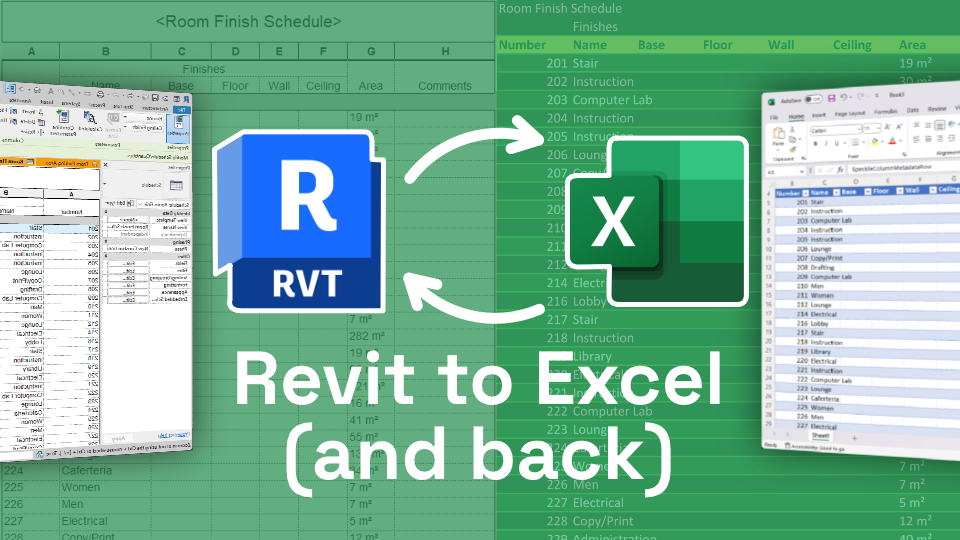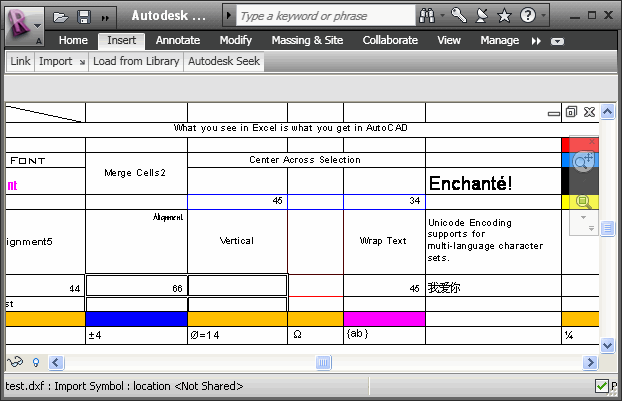Revit Tool Option for Streamlined Modeling and Style
Wiki Article
Excel Empowerment: Supercharge Your Revit Projects With Seamless Data Import
With smooth data import, Excel empowerment can be the secret to opening your project's full possibility. Think of enhancing the import process and making best use of effectiveness via smooth information combination. In this post, we will certainly share pointers and tricks for making use of Excel in your Revit jobs.The Power of Master Revit Projects
You can supercharge your Revit jobs by taking advantage of the power of Excel for smooth data import. Excel is a flexible device that can considerably enhance your workflow and performance in Revit (revit add ins). With Excel, you can easily import and handle huge amounts of information, saving you time and initiativeAmong the crucial advantages of utilizing Master Revit is its capability to manage intricate computations and solutions. You can use Excel to do estimations on your information, such as generating amounts, computing prices, or assessing efficiency. This can be specifically beneficial when dealing with large projects that require considerable estimations.

Additionally, Excel supplies a easy to use and acquainted user interface for dealing with data. You can organize and control your information in a spreadsheet layout, making it simple to watch and modify. This can be particularly handy when collaborating with others or when you require to make quick changes to your project data.
Furthermore, Excel permits you to conveniently import and export information between Revit and other software application applications. You can import data from exterior sources right into Revit, such as product specifications or tools timetables, and export data from Revit to Excel for further analysis or reporting.
Streamlining Data Import With Excel in Revit
Streamlining data import in Revit becomes less complicated when utilizing Excel as a device. With Excel, you have the power to effortlessly import and take care of huge quantities of data in your Revit tasks. By utilizing the familiar interface and functionality of Excel, you can save time and increase efficiency in your process.Among the essential advantages of making use of Excel for data import in Revit is the ability to quickly organize and manipulate information before importing it right into your task. With Excel's powerful functions, such as arranging, filtering, and formulas, you can promptly tidy up and format your data to satisfy the needs of your Revit task.
In addition, Excel allows you to import data from different sources, such as databases, spread sheets, or also online applications. This flexibility provides you the flexibility to collect data from various platforms and consolidate it into one main place for easy accessibility and monitoring.
On top of that, Excel gives the option to produce custom-made layouts for information import in Revit. By developing design templates tailored to your task's specific demands, you can make sure uniformity and precision in your data import procedure.
General, utilizing Excel as a tool for information import in Revit improves the process and enhances your performance. So why not make the most of this powerful device and supercharge your Revit jobs with smooth information import using Excel?
Optimizing Performance With Seamless Information Combination
Make best use of efficiency by perfectly integrating and taking care of data in your process. Gone are the days of manually inputting information into your system, wasting precious time and sources. With smooth information integration, you can simplify your processes and supercharge your performance.
Taking care of data becomes a breeze when you have a smooth assimilation system in position. You can easily arrange and classify your information, making it less complicated to get and assess. Bid farewell to the days of searching via endless spread sheets for that piece of information you require.

Excel Idea for Revit Projects
With these tips and methods, you'll have the ability to effectively manage your Revit tasks making use of Excel. Among the very first things you can do is to use Excel's powerful sorting and filtering features. This will certainly enable you to rapidly arrange and analyze your task information. You can arrange elements by their names or filter them based on details requirements, such as their standing or location. Another beneficial function is the capacity to produce solutions in Excel. You can utilize formulas to determine amounts, do intricate computations, and even automate specific tasks. This can save you a great deal of effort and time in your Revit jobs. Additionally, you can make use of Excel to create custom layouts for data import and export. By doing this, you can make sure consistency and precision when moving data in between Revit and Excel. Don't fail to remember concerning Excel's conditional formatting attribute. You can use this to highlight certain aspects or values based upon certain problems. This can assist you promptly recognize check here and deal with any type of problems or abnormalities in your task data. On the whole, understanding these Excel methods and tips will significantly enhance your capability to take care of and control data in your Revit jobs.Harnessing the Excel-Revit Connection for Success
To make the most of your Excel-Revit link, benefit from the capacity to effortlessly transfer and integrate project information. By harnessing this powerful link, you can supercharge your Revit jobs and enhance your process. With just a few straightforward actions, you can import data from Excel straight into Revit, conserving you time and ensuring precision.One of the crucial benefits of the Excel-Revit connection is the capacity to move data seamlessly. Whether you are importing routines, space information, or even geometry details, Excel provides an easy to use user interface that enables you to arrange and adjust your data before importing it right into Revit. This means you can quickly upgrade and change your project info in Excel, and with a couple check that of clicks, move those changes directly into your Revit version.
In enhancement to transferring data, the Excel-Revit connection likewise permits for synchronization. This means that any type of modifications made in Excel can be instantly upgraded in Revit, ensuring that your project info is always as much as day. This synchronization attribute is especially useful when handling intricate and huge tasks, as it removes the demand for manual data entry and reduces the risk of errors.
Conclusion
By streamlining data import and maximizing performance via seamless information combination, you can supercharge your tasks and attain success. Do not wait any kind of longer, begin harnessing the power of Excel in your Revit tasks today and unlock a globe of opportunities.You can supercharge your Revit projects by taking advantage of the power of Excel for smooth data import. With Excel, you have the power address to perfectly import and manage large amounts of information in your Revit jobs (revit tools). Overall, grasping these Excel methods and pointers will substantially boost your capacity to manage and manipulate data in your Revit projects
Whether you are importing routines, space information, or even geometry details, Excel offers an easy to use interface that enables you to arrange and control your information prior to importing it right into Revit. By streamlining information import and optimizing efficiency through seamless information combination, you can supercharge your jobs and achieve success.
Report this wiki page